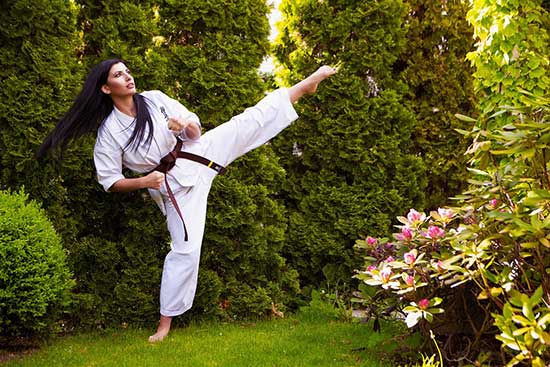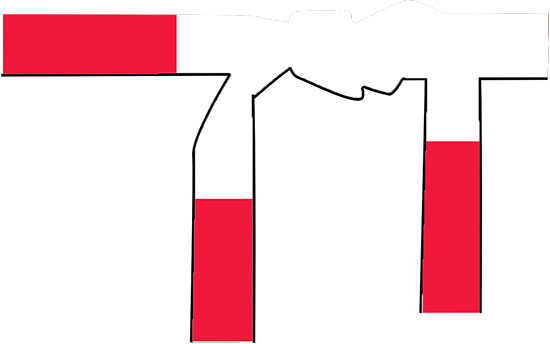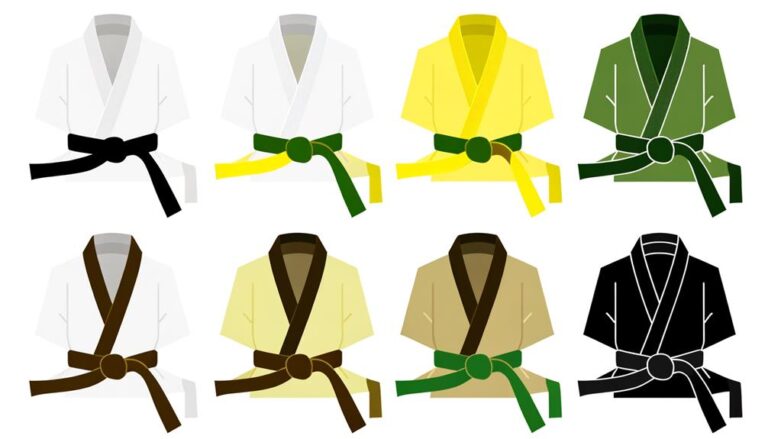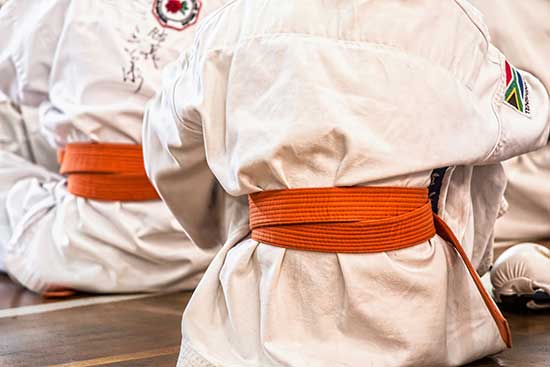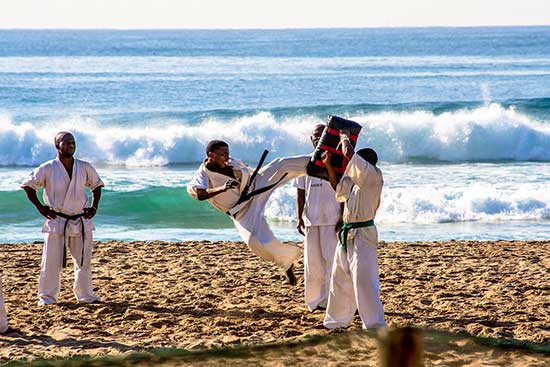While some might argue that the color of a belt doesn’t truly capture a martial artist’s skill, in the world of Kung Fu, the red belt holds a profound significance that goes beyond mere fabric.
As you’ve worked your way through the ranks, each color transition not only marked your progress but also the deepening of your understanding and respect for this ancient martial art.
The journey to earning a red belt is one filled with dedication, rigorous training, and a commitment to mastering techniques that are both complex and nuanced. This advanced level is not just a testament to physical prowess but to the mental fortitude and spiritual growth you’ve achieved.
Now, standing on the threshold of becoming a Kung Fu teacher, you’re about to embrace a role that carries immense responsibility and honor.
Let’s explore what it truly means to wear the red belt, the skills and knowledge required to attain it, and how this significant milestone prepares you for the profound journey that lies beyond.
Contents
The Journey to Red Belt
Achieving a red belt in Kung Fu isn’t just a step; it’s a significant leap that demands unwavering commitment and a profound grasp of intricate martial arts techniques.
As a martial artist, you’ll navigate through the intermediate belt ranking, each stage introducing you to diverse styles of Kung Fu. This journey typically spans three to four years, with the transition from one belt to the next taking one to two years, depending on your dedication and understanding of Kung Fu principles.
The red belt represents not just your technical proficiency but also your deep-rooted respect for the discipline. It’s a testament to your perseverance and the mastery you’ve achieved over the complex techniques that define Kung Fu.
Training for Red Belt
To achieve the coveted Red Belt in Kung Fu, you must surpass stringent requirements, mastering essential techniques across katas and weapons work.
This level demands not only physical prowess but also significant mental strength, preparing you for the complexities of advanced practice.
You’ll focus on honing your skills to an expert level, embodying the expertise and proficiency that the Red Belt signifies.
Red Belt Requirements
Earning a red belt in Kung Fu requires you to master advanced katas, and weapons handling, and delve into the philosophy underlying the martial arts. This level in the belt system signifies a high degree of proficiency and a deep understanding of Kung Fu’s intricate layers.
- Ranking System:
The red belt represents an advanced stage within the diverse styles of Kung Fu. It signifies that a student reaches a level where teaching and further contributions to the art are possible.
- Styles and Techniques:
Mastery of complex forms is crucial, especially in styles like Shaolin Kung Fu. Students must demonstrate fluency in both traditional and contemporary weapons work.
- Philosophical Development:
Delve deeper into the martial philosophy, integrating it into both practice and daily life.
Essential Techniques Mastery
Building on the foundational knowledge and skills acquired at earlier stages, the training for a red belt in Kung Fu concentrates on refining your mastery over advanced katas and weapon techniques. This critical phase in your martial journey demands an unyielding dedication to perfecting handwork, footwork, and bodywork techniques.
You’ll delve into the nuanced world of the Kung Fu fan, exploring its application in combat while enhancing your repertoire of stances and similar skills. The curriculum pushes you to integrate a seamless series of body movements, ensuring kicks and punches are executed with unparalleled precision and fluidity.
Mastery at this level also involves learning advanced forms, including sparring and animal imitations, setting a solid foundation for the black sash level.
Preparing Mental Strength
As you approach your training for the red belt in kung fu, frequently overlooked yet vitally important is the development of mental strength, a core component that complements and elevates your physical prowess. Preparing mental strength involves:
- Cultivating Focus and Discipline
- Visualization techniques to sharpen focus
- Strict discipline routines, mirroring practices at the Shaolin Temple
- Building Resilience
- Embracing challenges as opportunities for growth
- Learning from failures, viewing them as a new beginning
- Enhancing Mindfulness
- Meditation to maintain energy and confidence
- Mindfulness exercises to stay present and reactive
Kung Fu schools emphasize these practices, understanding that martial artists with robust mental fortitude are better equipped to handle the rigors of red belt training and beyond.
The Significance of Red
In various martial arts, the color red signifies a remarkable level of mastery and dedication, denoting grandmasters and highly skilled practitioners. Specifically in Kung Fu, a discipline deeply rooted in Chinese martial arts, the red sash plays a pivotal role.
Unlike karate, judo, or Brazilian jiu-jitsu, where belts are common, Kung Fu employs sashes to indicate rank. The red sash isn’t merely a piece of fabric; it embodies a significant level of expertise and experience.
Achieving this color means you’ve undergone extensive level training, surpassing the mere foundational stages. It symbolizes not just proficiency but an extraordinary commitment to the art.
The red sash isn’t awarded lightly; it’s the culmination of dedication, embodying the essence of mastery within the realms of Kung Fu.
Red Belt Techniques
You’ll find that mastering basic stances is critical as you progress into advanced punching forms and defensive maneuver strategies inherent to Red Belt Techniques. Each stance serves as a foundation, enabling you to execute complex attacks and defenses with precision and efficiency.
Through rigorous practice, you’ll refine these techniques, enhancing both your offensive and defensive capabilities in Kung Fu.
Basic Stance Mastery
Mastering basic stances such as the horse stance, bow stance, and cross stance is crucial for any red belt in Kung Fu, providing the stability and balance needed for executing advanced techniques effectively.
- Horse Stance
- The foundation of power in martial arts
- Essential for stability in dynamic movements
- Bow Stance
- Key for advancing and retreating techniques
- Demonstrates balance between strength and flexibility
- Cross Stance
- Enhances agility and maneuverability
- Crucial for defensive strategies and evasion
Basic stance mastery isn’t only about adopting positions seen in kung fu movies; it’s a deep dive into the art of Kung Fu, reflecting the discipline and precision inherent in the Shaolin style of Kung Fu. This foundational skill set paves the way for mastering more complex forms and techniques, embodying the essence of martial prowess.
Advanced Punching Forms
Advancing to the red belt level, you must refine your technique in advanced punching forms, focusing on the seamless integration of power, speed, and accuracy. These forms, essential in martial arts, demand precise coordination, timing, and fluid movement.
You’ll delve into complex combinations of strikes, mastering both hand and fist techniques. Training in Xiao Hong Quan, a cornerstone among the Shaolin Five, and Southern fist styles, you’ll encounter different styles of advanced punching forms. Each style emphasizes a unique aspect of martial prowess, pushing you to adapt and integrate foundational techniques learned in earlier stages.
Mastery of these forms isn’t just about executing movements but embodying the principles of efficiency, control, and harmony within each punch.
Defensive Maneuver Strategies
Building on your proficiency in advanced punching forms, it’s crucial to now focus on Defensive Maneuver Strategies, where understanding and implementing advanced defensive tactics and counterattacks become paramount. These martial practices aren’t just about physical prowess but also about the strategic interplay of mind and body.
The core elements include:
- Mastering timing, distance, and body positioning
- Redirecting an opponent’s energy to your advantage
- Employing advanced footwork and evasion to create counterattack opportunities
Incorporating weapons work elevates your defensive capabilities:
- Shaolin staff: For reach and leverage
- Two-section staff: For flexibility and surprise attacks
- Shaolin Spear: Combining precision and agility
Efficient defense maneuver strategies ensure you’re always a step ahead, turning opponents’ strengths into their vulnerabilities.
Responsibilities of Red Belts
As a red belt in Kung Fu, you’re expected to embody the art’s core principles, serving as a pivotal mentor and standard-bearer for less experienced practitioners. Achieving this rank signifies not only your martial proficiency but also your role as a teacher in Kung Fu, guiding students through intermediate levels towards black belt mastery.
Your responsibilities extend beyond mere technical expertise; you’re tasked with demonstrating discipline, respect, and humility, both on and off the mat. As custodians of the System’s traditions, red belts play a crucial role in mentoring, instructing, and setting a benchmark for dedication and continuous improvement.
You’re ambassadors of the martial art, upholding its values and ensuring its legacy is passed on accurately and respectfully.
Beyond the Red Belt
Reaching beyond the red belt in Kung Fu marks a significant milestone, demanding years of rigorous training and an unparalleled mastery of both the physical and philosophical aspects of the art.
Achieving this level signifies:
- Advanced expertise in martial techniques
- Forms: Execution of complex sequences with precision.
- Weapons Training: Mastery over traditional martial weaponry.
- Profound philosophical development
- Embodiment of Principles: Living the values and teachings of Kung Fu in daily life.
- Deep contribution to the art
- Teaching: Sharing knowledge, akin to the founder of Judo who believed in the dissemination of martial arts wisdom.
Beyond the red belt is usually reserved for the few who commit one to two years beyond the black belts, starting from the white belt, to attain the zenith of Kung Fu mastery.
Conclusion
As you continue your journey beyond the red belt, you’ll delve deeper into Kung Fu’s complexities. This advanced level demands rigorous training, mastering nuanced techniques, and embracing significant responsibilities.
The red belt isn’t just a symbol of your expertise; it’s a commitment to uphold the art’s integrity and contribute to its legacy. Your path forward involves continuous learning, teaching others, and refining your skills.
Embrace this challenge, for it’s the essence of true mastery in Kung Fu.
